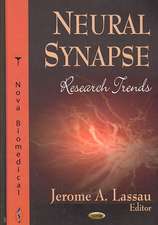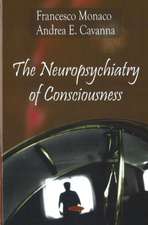MEG-EEG Primer
Autor PhD, Riitta Hari, MD, Aina Puce, PhDen Limba Engleză Paperback – 15 iun 2017
Preț: 705.89 lei
Preț vechi: 756.06 lei
-7% Nou
Puncte Express: 1059
Preț estimativ în valută:
135.09€ • 146.69$ • 113.47£
135.09€ • 146.69$ • 113.47£
Carte tipărită la comandă
Livrare economică 11-17 aprilie
Preluare comenzi: 021 569.72.76
Specificații
ISBN-13: 9780190497774
ISBN-10: 0190497777
Pagini: 348
Dimensiuni: 249 x 175 x 20 mm
Greutate: 0.7 kg
Editura: Oxford University Press
Colecția OUP USA
Locul publicării:New York, United States
ISBN-10: 0190497777
Pagini: 348
Dimensiuni: 249 x 175 x 20 mm
Greutate: 0.7 kg
Editura: Oxford University Press
Colecția OUP USA
Locul publicării:New York, United States
Recenzii
This Primer fulfills a gap in the human neurophysiology literature where no book exists dealing with MEG and EEG in equal terms. This is important since both methodologies are, in essence, complementary and jointly can be used to answer specific scientific questions with respect to a variety of brain functions. Special attention is paid to comparisons of findings obtained using both MEG and EEG modalities, what can yield important new insights, particularly in the growing field of cognitive neuroscience. Written in an appealing style, this Primer embraces the whole field of human neurophysiology." -Fernando Lopes Da Silva, MD, PhD, Emeritus Professor, Center of Neuroscience, Swammerdam Institute for Life Sciences, Amsterdam, The Netherlands
Notă biografică
Riitta Hari MD, PhD researches systems neuroscience and neuroimaging. She has pioneered the use of MEG in the study of the spatiotemporal dynamics of sensory, motor, cognitive and social brain functions both in health and disease. Her background training is in medicine, with specialization in clinical neurophysiology.Aina Puce, PhD is a social neuroscientist with research interests in the brain bases of human non-verbal communication. Her studies in basic and clinical human neuroscience have used scalp and intracranial EEG, and functional MRI methods. Her formal training was in biophysics and functional brain mapping/neurophysiology.






















